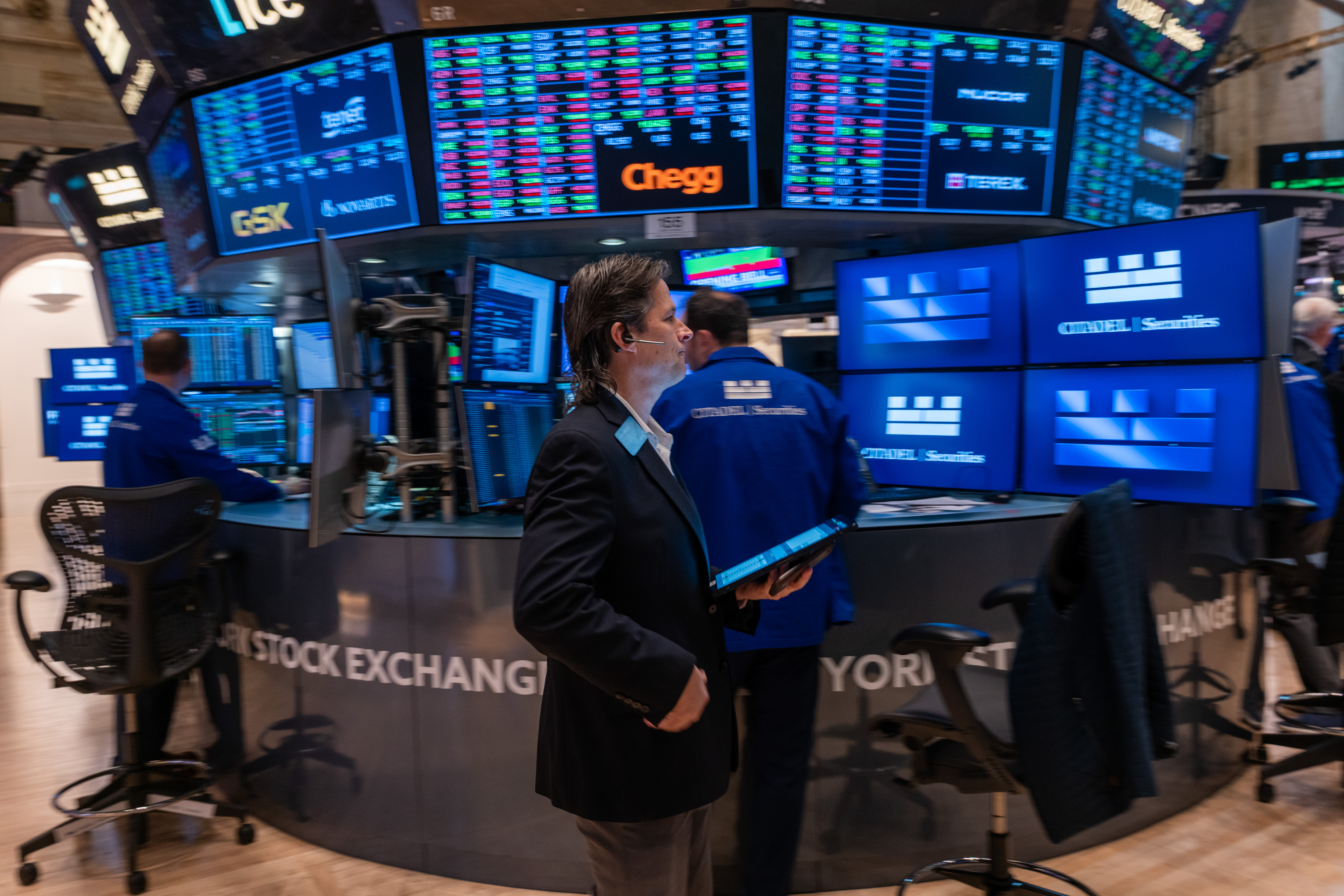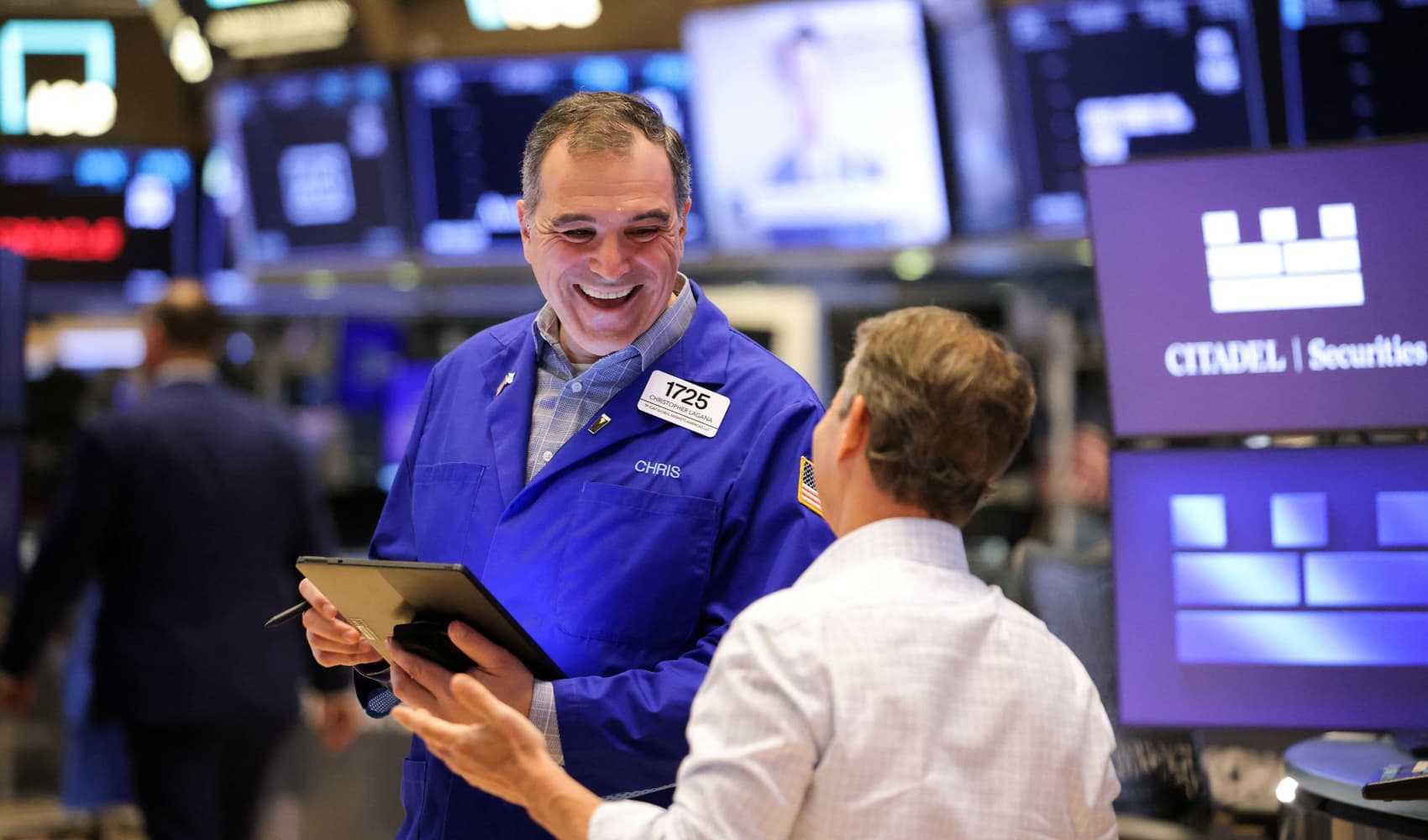Stock Market Monday: 5 Things You MUST Know Before Trading
Decoding Monday's Market: 5 Things Every Investor Needs to Know
Your Pre-Market Briefing: Navigating Monday's Trading Day
Monday mornings can feel like a rollercoaster before the market even opens. Are you ready to ride? It's crucial to arm yourself with the right information before diving into the trading day. This week promises to be particularly eventful, with a flurry of earnings reports and ongoing geopolitical tensions. So, grab your coffee and let's break down the five key things you need to know before the stock market opens on Monday.
1. Recovery Mode: Market Sentiment and Future Outlook
The Bounce Back: Are We Out of the Woods Yet?
Remember those initial jitters from early this month? The market has largely recovered from the shockwaves caused by President Trump's tariff announcements. Stock futures, while slightly down Monday morning, have shown resilience, suggesting a growing confidence among investors. But the question remains: is this a genuine recovery or a temporary reprieve? Keep a close eye on market sentiment; it can shift quickly.
2. Earnings Bonanza: A Week Packed with Corporate Results
The Big Names: Microsoft, Meta, Apple, Amazon, and More!
This isn't just any week; it's the busiest week of first-quarter earnings season! Get ready for a deluge of reports from some of the biggest names in the game: Microsoft, Meta, Apple, Amazon, McDonald’s, and Coca-Cola. Their performance will significantly influence market direction. Each earnings report will be dissected, analyzed, and used to predict future performance. Are these companies poised to deliver? That's the million-dollar question (or, more accurately, the multi-billion-dollar question!).
3. Tariff Troubles: How Trade Wars are Reshaping Manufacturing
China's Response: Finding New Markets and Pausing Production
Trump's tariffs are having a tangible impact, folks. Chinese manufacturers are actively seeking alternatives to the U.S. market or, in some cases, halting production altogether due to the significant 145% tariff on numerous imports. This shift in manufacturing dynamics could lead to supply chain disruptions, increased costs, and altered global trade flows. It's a domino effect that every investor needs to be aware of. How will these changes affect your portfolio?
4. Economic Indicators: Monitoring the Health of the Economy
Beyond Earnings: Keep an Eye on Key Data Releases
Earnings season is a big deal, but don't forget the broader economic picture. Keep a watchful eye on upcoming economic data releases, such as GDP growth figures, inflation reports, and unemployment rates. These indicators provide vital clues about the overall health of the economy and can significantly impact market sentiment. Is the economy growing at a sustainable pace, or are there signs of a slowdown? Knowing the answer is crucial for making informed investment decisions.
5. Geopolitical Risks: Navigating the Uncertainty Landscape
Global Events: From Trade Tensions to Political Instability
The stock market doesn't operate in a vacuum. Geopolitical events, ranging from trade tensions to political instability, can send shockwaves through the market. Stay informed about ongoing global events and their potential impact on your investments. Are there any emerging risks that could derail the market's recovery? Vigilance is key.
6. Reading the Tea Leaves: Analyzing Pre-Market Movers
Spotting Trends Before the Opening Bell: The Key is Early Data
Ever wonder how seasoned traders seem to know which way the market is leaning before the bell rings? It's all about analyzing pre-market movers. Look at overnight trading in futures, news releases that drop before 9:30 am ET, and international market performance. These early indicators offer valuable clues and can inform your trading strategy for the day. Are specific sectors showing unexpected strength or weakness?
7. Sector Rotation: Following the Money Flow
Which Sectors are Hot (and Which are Not): Keeping Up With the Trends
Money doesn't sit still; it flows. Sector rotation refers to the movement of investment capital from one industry sector to another. As the economy changes, so does the attractiveness of different sectors. Are investors piling into tech stocks, or are they shifting towards more defensive sectors like utilities? Understanding sector rotation can help you identify emerging trends and position your portfolio accordingly.
8. The Fed's Next Move: Interest Rate Hikes and Monetary Policy
Decoding the Fed: Paying Attention to Monetary Policy Decisions
The Federal Reserve (the Fed) plays a significant role in shaping the economic landscape. Its decisions regarding interest rates and monetary policy can have a profound impact on the stock market. Pay close attention to Fed announcements and speeches, as they provide insights into the central bank's thinking and future actions. Are interest rates expected to rise, remain stable, or even decrease? This will affect borrowing costs for companies and influence investment decisions.
9. The Power of News: Staying Informed with Reliable Sources
Filtering the Noise: Getting Real-Time, Actionable Information
In today's fast-paced world, news breaks constantly. Staying informed is essential, but it's equally important to filter out the noise and focus on reliable sources of information. Seek out reputable news outlets, financial publications, and investment research firms. Avoid relying solely on social media or unverified sources. The more informed you are, the better equipped you'll be to make sound investment decisions.
10. Technical Analysis: Using Charts to Predict Market Movements
Reading the Signals: A Deeper Dive on Charts
While not every investor relies on it, technical analysis can be a valuable tool. By studying past price and volume data, technical analysts attempt to identify patterns and predict future market movements. Are there any key support or resistance levels that could influence trading activity on Monday? Familiarize yourself with basic technical indicators such as moving averages, trendlines, and Fibonacci retracements.
11. Sentiment Analysis: Gauging the Mood of the Market
Are Investors Optimistic or Pessimistic?: Know where the tides turn
Market sentiment, the overall attitude of investors toward the market, can be a powerful force. When investors are optimistic, they're more likely to buy stocks, driving prices higher. Conversely, when they're pessimistic, they tend to sell, putting downward pressure on prices. Gauging market sentiment can provide valuable insights into potential market direction. Keep your eye on the sentiment of the market
12. VIX Index: Measuring Market Volatility
The Fear Gauge: Keeping an Eye on the VIX
The VIX, often referred to as the "fear gauge," is a measure of market volatility. It reflects investors' expectations of price fluctuations in the S&P 500 index over the next 30 days. A high VIX indicates increased uncertainty and fear in the market, while a low VIX suggests greater complacency. Monitoring the VIX can provide valuable insights into the level of risk and potential for market swings.
13. Currency Movements: The Impact of Exchange Rates
The Dollar's Dance: Exchange Rates Matter
Fluctuations in currency exchange rates can have a significant impact on multinational companies and international trade. A stronger dollar can make U.S. exports more expensive and imports cheaper, while a weaker dollar can have the opposite effect. Pay attention to currency movements, particularly if you invest in companies with significant international operations.
14. Commodities Corner: Tracking Raw Material Prices
Beyond Stocks: Commodities Can Influence Markets
Don't forget about commodities, such as oil, gold, and agricultural products. Changes in commodity prices can influence inflation, corporate earnings, and overall economic growth. For instance, rising oil prices can lead to higher transportation costs and increased inflation, while falling prices can benefit consumers and businesses. Keep an eye on key commodity prices and their potential impact on your investments.
15. Prepare Your Watchlist: Having a plan for success
Plan Ahead: Build a Watchlist
With all of this to keep in mind, it can get overwhelming. To make the most of it, prepare a watchlist of stocks that you want to keep an eye on. Set price alerts, and identify potential entry and exit points. Pre-market research is key.
Conclusion: Key Takeaways for a Successful Trading Week
So, there you have it: five crucial things to consider before the stock market opens on Monday. Remember, staying informed, analyzing data, and understanding market sentiment are essential for making sound investment decisions. Keep a close eye on earnings reports, tariff developments, economic indicators, and geopolitical risks. By preparing yourself with the right information, you can navigate the market with greater confidence and increase your chances of success. Good luck with your trading this week!
Frequently Asked Questions (FAQ)
Q1: How will the tariff impact really be felt?
The tariff impact will primarily be felt through increased consumer prices, potential supply chain disruptions, and reduced competitiveness for U.S. businesses relying on imported materials. We may also see retaliatory tariffs from other countries, further exacerbating trade tensions.
Q2: What if I don't have time to track all the earnings reports?
Prioritize the earnings reports of companies that have the biggest influence on your portfolio or the sectors you're most interested in. Focus on key metrics such as revenue growth, earnings per share, and forward guidance.
Q3: How can I stay updated on geopolitical risks?
Subscribe to reputable news sources, follow geopolitical analysts on social media, and consult with financial advisors who specialize in risk management.
Q4: What's the best strategy for dealing with market volatility?
Consider diversifying your portfolio, maintaining a long-term investment horizon, and avoiding emotional decision-making during periods of market turbulence. You might also use stop-loss orders to limit potential losses.
Q5: Where can I find reliable pre-market information?
Reputable financial news websites, brokerage platforms, and financial data providers offer pre-market analysis, futures quotes, and economic calendars. Be sure to cross-reference information from multiple sources.








